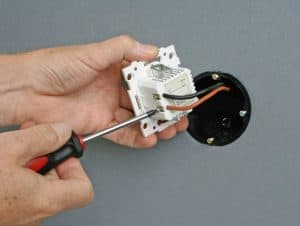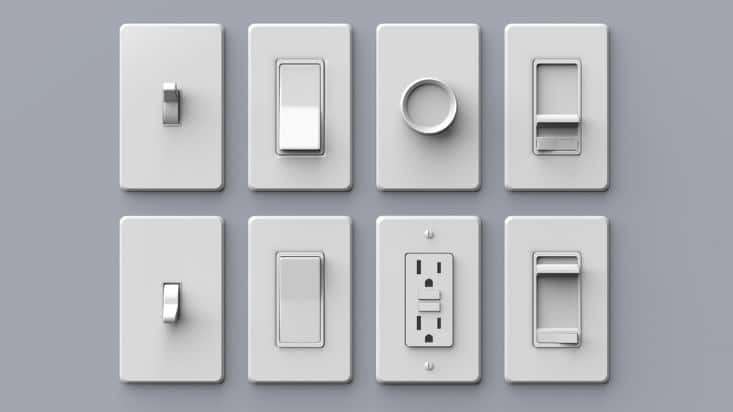You might think that all you need in a light switch is the ability to turn your lights on and off — but you’re wrong. That conventional version of the light switch, which merely toggles lights off and on, was invented in 1884, and in the intervening 135 years, there have been dozens of updates and improvements that make modern light switches safer and easier to install and use. Many of these changes you shouldn’t ever worry about, but there is one feature that should be on every homeowner’s mind: the dimmer switch.
If you think you can live without dimmers on your lights, you’re wrong. Here’s why you should consider installing dimmers around your home and how to do so affordably and expediently.
Dimmers Give You More Control
It’s the reason behind the smart home technology craze and the reason home renovations have been on the rise: Homeowners want more control over their personal environments. Dimmers provide more of that coveted control, and that isn’t as insignificant as you might expect. Controlling light is a major element of modern civilization; by not only being able to bring illumination to dark indoor spaces but alter the color and intensity of that light on your whim, you gain a significant advantage in creating the exact atmosphere you want and need.
Dimmers Save You Money
Simple toggle switches (the ones that only turn on and off) flick lights from their brightest setting to their darkest. The only way to overcome this is to go out of your way to set lights dimmer, which takes work and usually isn’t ideal in most situations. That means whenever you use your lights, they are automatically pulling the most possible power, costing you more on your energy bill than absolutely necessary. Meanwhile, if you use dimmer switches, you can reduce the energy demanded by your lights in most circumstances and cut your energy bill drastically.
Dimmers Increase System Longevity
For a similar reason that non-dimmed lights increase your energy bill, lights without dimmer switches place more stress on your electrical system and the bulbs themselves. Bulbs working at maximum capacity are more likely to die sooner than bulbs that are slightly dimmed, even when those bulbs are relatively long-lasting CFLs or LEDs. Estimates suggest that dimming lights could increase their lifespan by as much as 25 percent, meaning you don’t need to worry as much about keeping an inventory of bulbs on hand.
How to Install Dimmer Switches
If your handiness skill is abysmally low and you have never worked with electricity in your life, it might be best to call in a professional for this job. Home warranty companies, like American Home Shield, might be able to provide you with a list of service providers, and they might also help you pay for the upgrade if your electrical system is experiencing issues covered by your plan.
However, if you have installed light switches, outlets or some other electrical component before, you shouldn’t be intimidated by this relatively easy project. Here are the basic steps:

- Turn off the power to the light switch. Unscrew the fuses or flip the breakers on the power circuit on which you will be working. You don’t need to turn off power to the whole house — unless you are installing dimmers everywhere.
- Double-check for hot wires. Using a voltage detector, check the wires and the box for electricity. This step could save your life.
- Make sure the box will fit. If your dimmer box is larger than the existing switch box, you might need to cut the drywall to accommodate.
- Test the ground. Dimmer switches come with a green grounding wire or green screw which should be connected to the ground wire in your home, which is usually a bare copper wire. You should test that wire to be certain it is the ground. If you can’t find the ground, you’ll need to use a plastic box and prevent any exposed metal from touching the switch.
- Connect the dimmer switch. First, strip about 3/8-inch of insulation off the ends of all wires. Then, connect the wires from the wall to the wires on the dimmer, if they exist. Otherwise, you might need to loop the wires from the box around screws on the switch. Wrap the ground wire around the appropriate ground on the switch.
- Attach the cover plate. Fold the wires into the box and screw on the cover plate.
You can install dimmers anywhere in your home where you have a light switch, but the best places for them are living spaces (living and family rooms as well as bedrooms) and the kitchen.
Tiffani Wroe
Seek Visibility
tiffaniw@seekvisibility.com

Recent Comments